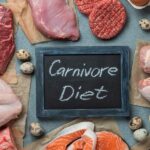Contents
- 1 What Is Fatty Liver?
- 2 Key Dietary Principles for Fatty Liver
- 3 What foods help cure a fatty liver?
- 4 Beneficial Foods for Fatty Liver
- 5 What foods to avoid when you have a fatty liver?
- 6 What’s the fastest way to reduce fatty liver?
- 7 Sample Meal Plan for Fatty Liver: Healthy & Delicious
- 8 References
- 9 Conclusion
What Is Fatty Liver?
Fatty liver disease can be of two types: alcoholic fatty liver disease (AFLD) and non-alcoholic fatty liver disease (NAFLD). NAFLD is more common and is often associated with obesity, type 2 diabetes, and metabolic syndrome. Diet plays a pivotal role in managing and reversing fatty liver disease, emphasizing the importance of knowing what foods to eat and avoid.
Key Dietary Principles for Fatty Liver
Here’s a table summarizing the key dietary principles for managing fatty liver, along with an explanation of each principle:
| Principle | Description |
|---|---|
| Low in saturated fats | Foods high in saturated fats should be limited as they can increase liver fat, worsening fatty liver disease. Saturated fats are often found in red meat, butter, and certain processed foods. |
| High in fiber | A high-fiber diet aids in weight management and supports liver function. Fiber helps regulate blood sugar levels and promotes a healthy digestive system. Foods like fruits, vegetables, whole grains, and legumes are good sources of fiber. |
| Rich in antioxidants | Antioxidants help protect the liver from damage by neutralizing harmful free radicals. Consuming foods rich in antioxidants, such as berries, nuts, green tea, and leafy green vegetables, can support liver health. |
| Moderate in carbohydrates | Consuming carbohydrates in moderation, especially simple sugars, is important to manage insulin resistance, a common issue in fatty liver disease. Focus on complex carbohydrates like whole grains and avoid high-sugar foods. |
Explanation of the Table
- Low in saturated fats: Saturated fats can lead to an increase in liver fat. Reducing intake of these fats helps prevent further liver damage and is crucial for managing fatty liver disease.
- High in fiber: Fiber is essential for maintaining a healthy weight and supporting liver function. It helps in slowing down digestion, which can regulate blood sugar levels and reduce the burden on the liver.
- Rich in antioxidants: Antioxidants play a key role in protecting the liver from cellular damage and reducing oxidative stress. Foods rich in antioxidants can help in maintaining liver health and preventing progression of fatty liver disease.
- Moderate in carbohydrates: Managing carbohydrate intake, particularly simple sugars, is important for controlling insulin resistance, which is often associated with fatty liver disease. A balanced intake of carbohydrates, primarily from complex sources, supports overall metabolic health and liver function.
What foods help cure a fatty liver?
For managing fatty liver, here are additional food options that are beneficial:
- Citrus fruits (like oranges and grapefruits)
- Apples
- Tomatoes
- Beetroot
- Carrots
- Grapes
- Papaya
- Turmeric
- Artichokes
- Sweet potatoes
- Yogurt (especially low-fat)
- Almonds
- Sunflower seeds
- Chia seeds
- Pumpkin seeds
- Brown rice
- Lentils
- Chickpeas
Beneficial Foods for Fatty Liver
Detailed explanation of the foods beneficial for fatty liver and their impact on liver health:
1. Leafy Green Vegetables
Examples: Spinach, kale, broccoli
Key Nutrients: Antioxidants, fiber
Leafy green vegetables are powerhouse foods for liver health. They contain high levels of antioxidants, which combat oxidative stress and reduce the damage to liver cells caused by free radicals. The fiber in these vegetables aids in digestion and helps prevent the accumulation of fat in the liver, promoting overall liver detoxification. By integrating these vegetables into your diet, you can support your liver’s natural cleansing processes and reduce fat buildup.
2. Fatty Fish
Examples: Salmon, mackerel, sardines
Key Nutrients: Omega-3 fatty acids
Fatty fish are rich in omega-3 fatty acids, essential fats that the body cannot produce on its own. These fats are known for their anti-inflammatory properties, helping to reduce inflammation in the liver and lower the levels of liver fat. Regular consumption of fatty fish can be beneficial in managing and reducing the risks associated with fatty liver disease.
3. Nuts and Seeds
Examples: Walnuts, flaxseeds
Key Nutrients: Omega-3 fatty acids, antioxidants
Nuts and seeds are not only a good source of healthy fats but also contain important antioxidants. These nutrients work together to support liver health by reducing oxidative stress and inflammation. Walnuts and flaxseeds, in particular, have high levels of omega-3 fatty acids, which are beneficial for reducing liver fat and enhancing liver function.
4. Whole Grains
Examples: Oats, barley, quinoa
Key Nutrients: Fiber
Whole grains are an important part of a liver-friendly diet due to their high fiber content. This fiber helps regulate blood sugar levels and improves insulin sensitivity, which is crucial for managing fatty liver disease. Foods like oats, barley, and quinoa also provide a slow and steady source of energy, preventing spikes in blood sugar and reducing fat storage in the liver.
5. Olive Oil
Key Nutrients: Monounsaturated fats
Olive oil is recognized for its heart-healthy fats, particularly monounsaturated fats, which have beneficial effects on liver health. Studies have shown that incorporating olive oil into your diet can lead to improvements in liver enzyme levels and a reduction in liver fat. It’s a healthier fat choice that can replace saturated fats in the diet, aiding in the management of fatty liver disease.
6. Fruits and Berries
Examples: Blueberries, strawberries, apples
Key Nutrients: Antioxidants
Fruits and berries are rich in antioxidants, which play a significant role in protecting the liver from damage and supporting its healing process. These foods not only help in reducing liver fat but also in maintaining overall liver health. Blueberries, strawberries, and apples, in particular, are known for their liver-friendly properties.
When managing fatty liver disease, it’s not just about what you should eat, but also what foods you should avoid to prevent further liver damage and fat accumulation. Here’s a detailed look at the types of foods to steer clear of:
1. Sugary Foods and Beverages
Examples: Soda, candy, baked goods, and sweetened cereals
Issue: These foods are high in simple sugars, particularly fructose, which can lead to an increase in liver fat. Consuming large amounts of sugary foods and drinks can contribute to obesity, insulin resistance, and the development of NAFLD.
2. Refined Carbohydrates
Examples: White bread, pasta, and rice
Issue: Refined carbs are stripped of their fiber and nutrients, leading to rapid spikes in blood sugar and insulin levels. This can increase fat storage in the liver and exacerbate fatty liver disease.
3. Fried and Fast Foods
Examples: French fries, fried chicken, and fast food burgers
Issue: These foods are typically high in unhealthy fats and calories, contributing to weight gain and increased liver fat. Regular consumption of fried and fast foods can worsen liver health and promote the progression of fatty liver disease.
4. Red and Processed Meats
Examples: Beef, pork, sausages, and deli meats
Issue: High in saturated fats and often processed with additives, these meats can increase inflammation and liver fat, potentially leading to more severe liver conditions.
5. Alcohol
Issue: Even in moderate amounts, alcohol can be harmful to the liver, exacerbating fat accumulation and leading to inflammation and liver damage. It’s particularly important for those with fatty liver disease to limit or avoid alcohol consumption.
6. High-Fat Dairy Products
Examples: Full-fat milk, cream, and cheese
Issue: These products are rich in saturated fats, which can contribute to liver fat accumulation and worsen fatty liver disease.
7. Excessive Salt Intake
Examples: Salty snacks, processed foods, and ready-made meals
Issue: High salt intake can lead to water retention and increased blood pressure, further stressing the liver and complicating fatty liver disease.
What’s the fastest way to reduce fatty liver?
The fastest way to reduce fatty liver is through a combination of losing weight, eating a healthy diet rich in liver-friendly foods, reducing intake of sugars and saturated fats, exercising regularly, avoiding alcohol, and staying hydrated. Consistent, moderate changes in lifestyle are key to effectively managing and improving liver health.
Here’s an improved sample diet chart for a fatty liver patient, including meat options that are healthy and liver-friendly:
| Time | Meal Type | Food Options |
|---|---|---|
| 7:00 AM | Breakfast | Whole-grain toast with avocado and a side of turkey bacon |
| 10:00 AM | Mid-Morning Snack | Greek yogurt with chia seeds and fresh berries |
| 12:30 PM | Lunch | Grilled chicken salad with mixed leafy greens, cherry tomatoes, and olive oil dressing |
| 3:00 PM | Afternoon Snack | Apple slices with almond butter |
| 6:00 PM | Dinner | Baked salmon with roasted sweet potatoes and steamed asparagus |
| 8:00 PM | Evening Snack | Cottage cheese with sliced peaches or citrus fruits |
In this diet chart, I’ve included lean protein sources like turkey bacon, grilled chicken, and salmon, which are good for liver health. These meals are balanced to provide essential nutrients without overloading the liver with harmful fats. They are rich in fiber, antioxidants, and healthy fats, which are key dietary components for managing fatty liver.
References
- “Liver Disease: Nutrition and Diet” by the British Liver Trust
This resource offers detailed guidance on the diet recommended for liver disease patients, including specific foods and dietary patterns. - “Healing Fatty Liver Disease: A Complete Health and Diet Guide, Including 100 Recipes” by Dr. Maitreyi Raman, Angela Sirounis, and Jennifer Shrubsole
This book includes information on fatty liver disease and offers 100 recipes designed to support liver health. - “The Liver Healing Diet: The MD’s Nutritional Plan to Eliminate Toxins, Reverse Fatty Liver Disease and Promote Good Health” by Michelle Lai and Asha Kasaraneni
It provides a detailed plan for eating well to support liver health, with a focus on reversing fatty liver disease.


